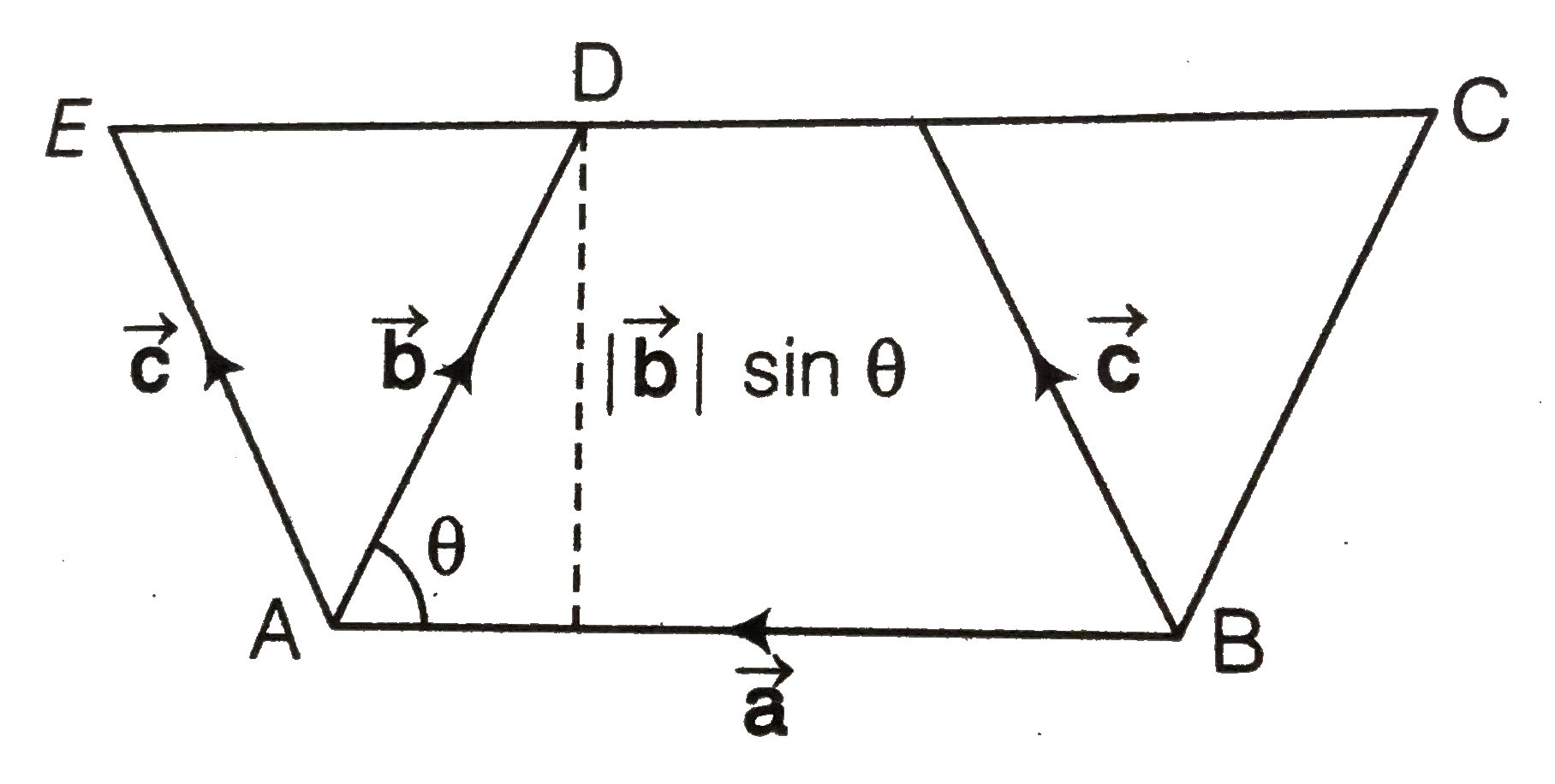If , then show that . Interpret the result geometrically.
Video Solution
Text Solution
The correct Answer is:Since,
Now,
Also,
From Eqs. (i) and (ii),
Geometrical interpretation of the result

If ABCD is a parallelogram such that and these adjacent sides are making angle between each other then we say that
Area of parallelogram Since, parallelogram on the same base and between the same parallels are equal in area.
We can say that,
This also implies that,
So, area of the parallelograms formed by taking any two sides represented by as adjacent are equal.
Since,
Now,
Also,
From Eqs. (i) and (ii),
Geometrical interpretation of the result

If ABCD is a parallelogram such that and these adjacent sides are making angle between each other then we say that
Area of parallelogram Since, parallelogram on the same base and between the same parallels are equal in area.
We can say that,
This also implies that,
So, area of the parallelograms formed by taking any two sides represented by as adjacent are equal.
|
Topper's Solved these Questions
Similar Questions
Knowledge Check
If →a,→b,→c are three vectors, then
[→a×→b→b×→c→c×→a]=A[→a→b→c]B2[→a→b→c]C3[→a→b→c]D[→a→b→c]2If →A+→B+→C=0, then →A×→B is
A→B×→CB→C×→BC→A×→CDNone of theseIf 4→a+5→b+9→c=→0 then (→a×→b).{(→b×→c)×(→c×→a)} is equal to
A→0B→aC→bD→c
If →a,→b,→c are coplanar then show that →a×→b,→b×→cand→c×→a are also coplanar.
View SolutionProve that [→a×→b,→b×→c,→c×→a]=⎡⎢ ⎢⎣→a.→a→a.→b→a.→c→a.→b→b.→b→b.→c→a.→c→b.→c→c.→c⎤⎥ ⎥⎦=[→a,→b,→c]2,Hence show that vectors →a×→b,→b×→c,→c×→a are non-coplanar if and only if vectors →a,→b,→c are non-coplanar
View SolutionIf 4→a+5→b+9→c=0 then (→a×→b)×[(→b×→c)×(→c×→a)] is equal to
View Solutionif →a,→b,→c are three vectors such that →a+→b+→c=→0 then
View SolutionIf →a+2→b+3→c=→0 then →a×→b+→b×→c+→c×→a=
View Solution
